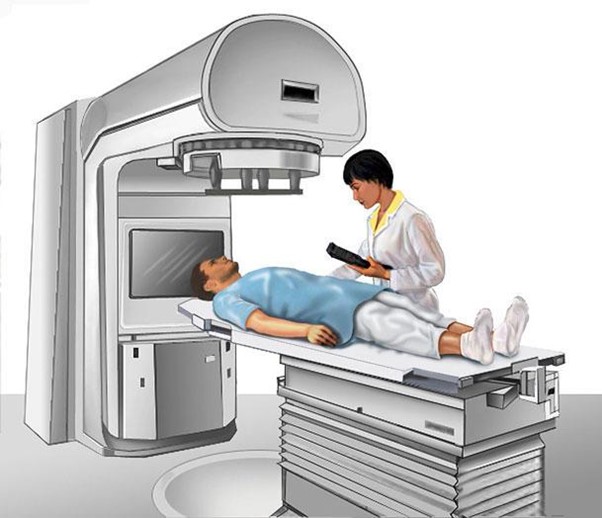A nurse in a long-term care facility is delegating care for a group of clients for the oncoming shift. Which of the following tasks should the nurse delegate to an assistive personnel? (select all that apply)
Transfer a client who is receiving radiation therapy to radiology.
Measure vital signs for a client who requires contact precautions.
Record urine output for a client who has a suprapubic catheter.
Plan care for a client who has dysphagia.
Correct Answer : B,C
The correct answers are B and C.
Choice A Reason: Transferring a client who is receiving radiation therapy involves understanding the precautions and care associated with radiation, which may be beyond the training of assistive personnel (AP). Radiation therapy clients may have specific safety and transport protocols that require the expertise of licensed nursing staff.
Choice B Reason: Measuring vital signs for a client who requires contact precautions is a task that can be delegated to AP. Assistive personnel can be trained in infection control procedures and the use of personal protective equipment (PPE), making them capable of measuring vital signs while adhering to contact precautions.
Choice C Reason: Recording urine output for a client who has a suprapubic catheter can be delegated to AP. This task involves measuring and documenting a quantifiable data point, which does not require the clinical judgment of a nurse. AP can be trained to accurately measure and record urine output.
Choice D Reason: Planning care for a client who has dysphagia is a complex task that involves assessment and clinical judgment, which are responsibilities of the licensed nurse. Dysphagia can have serious complications, and care plans must be tailored to each client’s needs, requiring the expertise of a nurse.
Nursing Test Bank
Naxlex Comprehensive Predictor Exams
Related Questions
Correct Answer is A
Explanation
Choice A reason:
"You might experience altered taste sensations" is the correct statement. When providing teaching to a client about to undergo external radiation therapy for cancer, the nurse should include information about potential side effects and what to expect during the treatment. One common side effect of radiation therapy, especially when the treatment is focused on or near the head and neck region, is altered taste sensations. Radiation can affect the taste buds and lead to changes in how foods taste.
Choice B reason:
"Use rubbing alcohol to remove the ink markings. “The statement is incorrect. The ink markings made on the client's skin are used as reference points for the radiation therapy treatment. It is essential not to remove these markings, as they are crucial for accurate positioning during each treatment session. The nurse should instruct the client not to tamper with the markings, and the radiation therapy team will remove them when they are no longer needed.
Choice C reason:
"Wear a binder over the radiation site." The statement is incorrect. Wearing a binder over the radiation site is not a standard practice during external radiation therapy. The client should be instructed to follow the specific guidelines provided by the radiation therapy team regarding clothing and positioning during treatments. The use of binders or other tight clothing over the treatment area may not be recommended, as it can cause discomfort or interfere with the delivery of radiation.
Choice D reason
"Wash your skin thoroughly with a washcloth after each treatment." Is incorrect statement. During radiation therapy, the skin in the treatment area can become sensitive. It is essential for the client to follow the specific instructions provided by the radiation therapy team regarding skin care. Generally, the client should avoid using harsh soaps or scrubbing the skin vigorously. Instead, they should gently cleanse the area with a mild soap or as directed by their healthcare providers.

Correct Answer is A
Explanation
The correct answer is A. Increase dietary calcium. Prednisone is a corticosteroid medication that can cause bone loss (osteoporosis) by reducing the absorption of calcium and increasing the excretion of calcium in the urine. Therefore, patients taking prednisone should increase their intake of calcium-rich foods or supplements to prevent bone loss and fractures.
Choice B is wrong because prednisone can cause weight gain, not weight loss, by increasing appetite and fluid retention. Patients taking prednisone should monitor their weight and limit their salt and calorie intake.
Choice C is wrong because prednisone should not be taken on an empty stomach, as it can cause stomach irritation, ulcers, or bleeding. Patients taking prednisone should take it with food or milk to protect their stomach.
Choice D is wrong because prednisone should not be scheduled at bedtime, as it can cause insomnia or difficulty sleeping. Patients taking prednisone should take it in the morning or early afternoon to avoid disrupting their sleep cycle.
Whether you are a student looking to ace your exams or a practicing nurse seeking to enhance your expertise , our nursing education contents will empower you with the confidence and competence to make a difference in the lives of patients and become a respected leader in the healthcare field.
Visit Naxlex, invest in your future and unlock endless possibilities with our unparalleled nursing education contents today
Report Wrong Answer on the Current Question
Do you disagree with the answer? If yes, what is your expected answer? Explain.
Kindly be descriptive with the issue you are facing.
